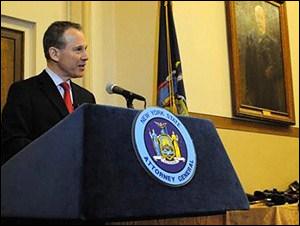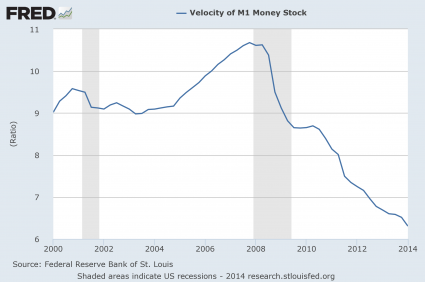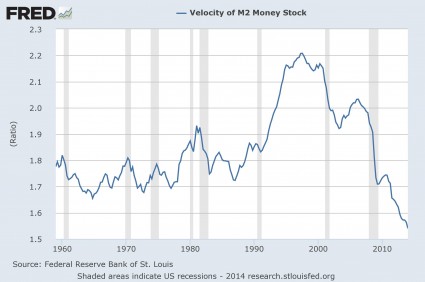As with everything concerning this subject, there is a propaganda “line” that Israel-advocates sell the world. First, there was the pioneer nation that made the desert bloom, turning it into a modern society. Lately, it’s become the “start-up nation.” This myth sells an Israel full of technical geniuses coding their hearts out to bring innovation to the world. It suggests an Israel in tune with the democratic and entrepreneurial spirit of the rest of the world. Even a nation on the cutting edge of technological discovery. After all, if Warren Buffett invested $4-billion in one of Israel’s most profitable companies, doesn’t that prove the case?
While there is an element of truth to this story, as there are with all myths, it conceals far more than it reveals. A recent interview with renowned Israeli economist Dan Ben-David, exposes the rest of the sordid picture of an economy rent in two, divided between haves and have-nots, between a secular Jewish elite and all the rest. It’s worth quoting extensively from this piece since Ben-David offers a probing, even revelatory portrait of a nation, and economy in dire straits. It’s a picture you’ll almost never see in the mainstream media:
Professor Dan Ben-David, a noted economist, has been observing Israel’s socioeconomic policies and studying their long-term implications with consternation for more than two decades. Over the last six years, serving as the executive director of the Taub Center for Social Policy Studies in Israel, his insight by which the Zionist project could ”end in tears” has been deepening. He feels that ”the window of opportunity enabling us to save the state from collapse is getting smaller, as we reach the point of no return.”Keep in mind, this isn’t Norman Finkelstein or Noam Chomsky speaking. This is a respected Israeli economist who buys into the Zionist dream, albeit with a critical perspective. When he declares Israel is on the road to ruin, someone ought to sit up and take notice.
In an interview with Al-Monitor, Ben-David explains why the path that the State of Israel is following in its 66th year will eventually lead to the system’s collapse.
Here’s more of his analysis:
When I deal with the socioeconomic aspect of Israel, I have the feeling that we’re letting the country slip through our fingers. It’s ironic. On the one hand, this really is the “startup nation.” We are on the forefront of developments in high-tech and medicine. At the same time, however, there is another country here. What we have, in effect, is two countries. We track productivity rates in Israel, and based on the data, productivity here is among the lowest in the developed world. Obviously, that has implications on growth and quality of life. All the OECD [Organisation for Economic Co-operation and Development] states beat us in that.Ben-David expounds upon his ideas in greater detail in this report published by his Taub Center at Tel Aviv University.
It is important to understand that this is a trend. It is a process that began in the 1970s, so it is possible to say that we have been in decline for the past 40 years. If, in the 1950s and 1960s, we were able to reduce the gaps between us and the world’s leading countries, the trend has reversed itself since then.
That means that even when there are people who live here and who want to live here, there will also be people who leave because they can get more somewhere else. We are passing the threshold in which more and more people will not want to live here, and that could end in tears. We have to ask ourselves where our children and grandchildren will be. It is true that we are not talking about major calamities in the next year or two. We still have time to make changes and fix the problems, but that time is running out.
The other aspect of the problem is inequality and poverty. Poverty rates in Israel are among the highest in the developed world. Of course, these two things are interconnected. If, in the 1950s and 1960s, we were an example to the West of how a country does things the right way, we have since become one of the least egalitarian countries in the world.
Behind the inequality and low productivity, we find a growing population that did not receive the tools it needed from the state to integrate into the modern workforce. By this, I mostly mean the Arab and ultra-Orthodox sectors. Their situation has a negative impact on productivity. In an economy where productivity is low, it is impossible for wages to be high. When productivity in an entire country is very, very low, it says something about that country’s ability to offer high wages. The population that continues to grow lacks the tools and condition to integrate into the market. What is needed to understand the reasons for this is to take a look at the level of the country’s education in the core subjects. Since the 1990s, the State of Israel’s achievements in international mathematics and reading tests are among the lowest in the developed world, and we can’t seem to overcome that.
…This is true even if we don’t include the ultra-Orthodox, because their children do not participate in international testing. In other words, if they were included in the test results, the situation here would be even more dismal. When we look at the achievements of Arab children, we see that the level of education we provide them in core subjects is beneath what they would get in developing countries. That has enormous implications, because if we consider the demographics, we see that almost half the children in this country are either ultra-Orthodox or Arab. When they will grow older, they will increase the percentage of the population that is unable to participate in the workforce. Productivity will then decrease and existing gaps will expand. It is the responsibility of the state to reach these children and provide them with the tools they need.
First of all, we need a structural reform in the education system. If the education we provide in the periphery is at least as good as the education in the center of the country, and if we connect those places to the center of the country with a rapid, inexpensive, reliable and readily available transportation system, it will mean that almost the entire population will be living within half an hour of the country’s center. That’s a key issue, and it’s hard for people to swallow that.
The main story is that there are gaps among us, among the part of the country that is not ultra-Orthodox or Arab. If we just look at the middle class, we find that the gap between its two extremes is among the highest in the Western world. Gaps in education hint at what will happen once children grow up, because all of this will be expressed later on as gaps in income.
That is actually incorrect [the the Netanyahu government is a major instigator of structural reforms]. We’re riding a wave of marketing. Not every wage agreement is a reform. We are avoiding any dealing with the core problems. We, the Israelis, believe that everything will work itself out. Apparently, it’s part of our nature. There have been some changes in the past decade, and it is all starting to click for quite a few people, but what is happening now is that we are treating the symptoms without treating the actual problems.
What is needed here is systematic treatment of the problems of the kind that the prime minister must lead, together with his Cabinet. What is needed is a comprehensive master plan, because we are in a race against time…And as hard as it is now, once we reach a certain point it will become absolutely impossible to do anything. We will reach the point of no return.
It won’t happen in two years. I’m talking about trends. Take the ultra-Orthodox, for example. They make up 8.5-9% of the total population. What will happen when their children grow up? We won’t be able to manage. That is why we have to reach their school-age children today. There isn’t much time left. Half of those children don’t even get a developing world education, so there is no way that they can maintain a developed world economy. They could only maintain a developing world economy, and a developing world economy can’t maintain a developed world military. At that point, there will be no country left. This is a whole new definition of national security: If we don’t have an economy that can keep everything together, we will not be able to contend with the security challenges we face.
When it comes to the ultra-Orthodox, the main emphasis should be on educating their children. There is no modern country apart from Israel that allows parents to prevent their children from receiving the education they need. There are things that every child must know.
Shir Hever, one of Israel’s foremost economists studying the costs of Occupation and maintenance of the national security state, and a former student of Ben David’s, adds his own analysis:
…[Ben-David] doesn’t ask himself why Israel has such a faulty education system…Massive and decade-long cuts in Israel’s education system have been the direct result of unsustainable security costs…Deep discrimination within Israel’s education system has channeled resources to the illegal colonies, drying up the center. Israel’s national education system is geared towards preparing the pupils for the army, a highly militaristic system, in which Arabic, if learnt at all, is mainly seen as a tool to enter into service in a military intelligence unit. In fact, there are entire schools which are sponsored by weapons manufacturing companies.In the past, Israel’s advocates here have claimed that Israel’s economic divisions are somehow not the fault of the State since the have-nots in the Palestinian and ultra-Orthodox sectors opt out of the national educational and social system. This is simply not an excuse. As Ben David points out, the responsibility of a government and society is to the good of the whole. If the greater good includes educating all children so that they may support themselves and their families and contribute to society, then government must both offer a good education for all and obligate parents to participate in the educational system. There is simply no excuse for accepting half the nation’s children getting no or substandard educational opportunity. A society that settles for this is one that has failed, despite whatever innovation it may offer in other areas. Israel is not a nation only of the secular educated elite. It is a nation of all its citizens (or should be). If it is any less, it is a failure. Plain and simple.
Ben David has previously shown shocking numbers of educated Israelis who leave Israel, seeking employment elsewhere. Of course, many of those who leave do so because they hope to give their children better education somewhere else, but what about those who wish to raise their children in a less militarized environment?
What Mazal Mualem refers to as the “diplomatic process,” is a code-name for a system of colonization and aparheid. This system was accepted by the majority of the Jewish-Israeli public because it promised to discriminate in their favor, but as Ben-David shows, the discrimination and inequality tends to seep further, and has caused wide gaps even within the hegemonic group.
Also, this article didn’t really talk about what is exactly Israel’s “start-up nation.” The real question is how many of the successful companies which contribute to this image are in fact security and military companies, whose success depends on the continuation of the repression of Palestinians. Such companies are reluctant to hire Palestinian citizens of Israel, and usually ultra-Orthodox Jews as well (unless they happened to have served in the army). Therefore, the issue of occupation and apartheid is not one aspect of this story, but the very root of the problems which Ben-David so aptly describes.
Though Shir alludes here to the enormous costs of maintaining Occupation and the national security state, this article elaborates on the issue.













